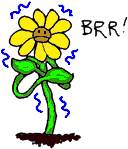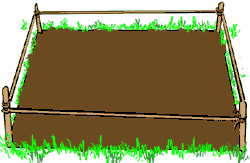Preparing Your Garden Plot
The ground in your garden has been holding moisture all winter and spring. You will have to perform a 'ball test' to see if it's ready to be worked. Pick up a handful of soil and squeeze it firmly into a ball.

If it sticks together, it's still too wet or it may be the clay variety. If you try to work wet soil, it will compact and become as hard as a rock. Let the garden dry out for a few more days, especially if it's been a wet spring, and test it again. If the ball falls apart easily, then the soil is dry enough to be worked. Once it passes the 'ball test', you'll have to check its temperature to see if it's warm enough for the seeds.
- Dig 8 inches (20 cm) down at a point near the middle of the garden and put your hand in the soil. You can feel if the soil has warmed up or is still chilly to the touch.

- Refer to the back of your seed packets to see if they prefer to be planted in warm or cool soil.
- If you have seeds that are okay to plant in cool soil, you can jump ahead to planting.
- For seeds that need warmer soil, wait a few days and do the test again.
- If you want to help the soil warm up faster, put down a layer of thin black plastic.

After a few sunny days, roll back the cover and do the same test again. Once your soil is warm to the touch, you can prepare your garden plot for planting. To prepare your garden plot, you will need:
- your garden plan,
- a measuring tape,
- a ball of garden twine,
- four stakes,
- a shovel,
- a garden fork,
- a metal rake.

- Refer to your garden plan to find the exact location of your garden.
- Use the measuring tape to mark out the length and width of your plot.
- Put a stake in the ground at each corner and tie the twine around them to surround your garden on all 4 sides.
- Use a shovel to remove grass, weeds, and rocks from your garden plot inside the twine border.
- If you wish, you can remove the twine.
- Use the garden fork to turn over the soil and break up any big lumps.
- If you have clay soil, don't dig it over, just break up the lumps.
- Work from the back of the garden toward the front so you don't compact the soil you just worked.
- Now is a great time to condition the soil if you need to.
- Using the teeth and back of a metal rake, smooth and level the surface.
- Your garden is ready for the next step: preparing your rows.
planning
planting
|





